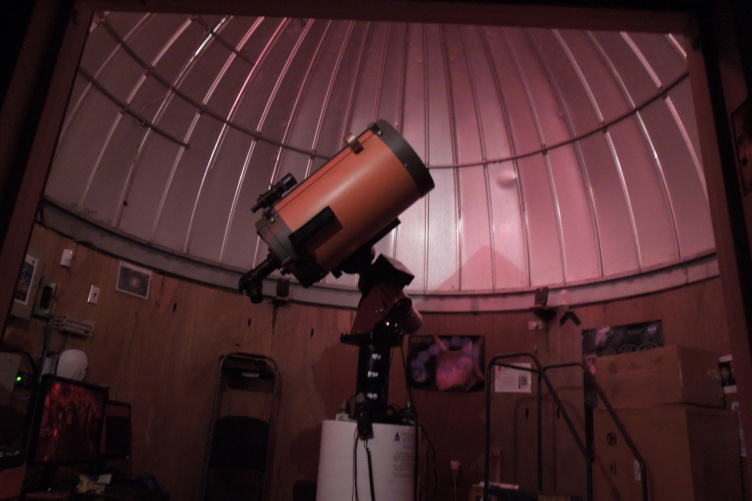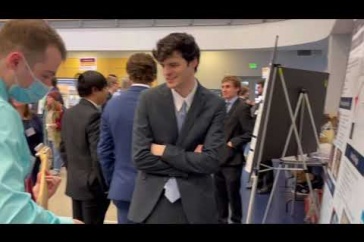
The sky was a dark navy. There were many stars breaking through. The moon shone brightly, illuminating the night. The air was still, except for a slight breeze.
On Spinney Lane, off the Mast Road Extension, a large building in the shape of a silo dominates the patch of land. Behind the building’s doors is the UNH Observatory. The observatory houses a focal point: a 14-inch telescope that gathers nearly 3,000 times as much light as the unaided human eye.
Since its move from Boulder Field to the current location in 2004, UNH’s observatory has provided the university and surrounding community with the opportunity to learn more about what is in the sky. Students use the observatory for research and course labs, but the public can visit as well.
“Observing the night sky either with or without a telescope is like taking a nature walk at night. It allows you to experience the natural world in a very different way,” says John S. Gianforte, the director of the UNH Observatory and instructor of astronomy. “Most guests find this very rewarding, and it is our goal to help our students and guests to make their own discoveries each time they come out.”
The optimal weather conditions for observing are cool nights that are crisp, dry and clear. “If the sky is clear there is always something interesting to see and look for, such as comets, asteroids, planets, plus many deep-sky objects like galaxies,” says Gianforte.
“The best part [about observing] is that you see objects as they were in the past,” says Domenico Andreoli, a physics graduate student and the observatory manager. “Light travels at a finite speed, so any object you look at in the night sky you are seeing it as it was seconds, minutes, hours or years ago. For example, the moon is about one second old when you look at it.”
During a recent public viewing, Vega, the fifth brightest star in the universe located close to the sun, could be seen clearly even though it is 25 lightyears away. The Ring Nebula was viewed, which, from the telescope, looked similar to a piece of white loop-shaped cereal. In reality, the Nebula is brightly colored, but objects look black and white through the telescope. Finally, I got a good look at the moon. Using a remote control, the moon’s craters and the atmosphere beyond were visible.
The UNH Observatory offers free public viewings on the first and third Saturday nights of every month, year-round, from 8 –10 p.m. when the sun sets earlier, and 9 – 11 p.m. when it sets later. Before you visit, check the UNH Observatory Facebook page to see if the skies are clear enough for the event to run.
-
Written By:
Kate Springer '18 | Communications and Public Affairs



















































